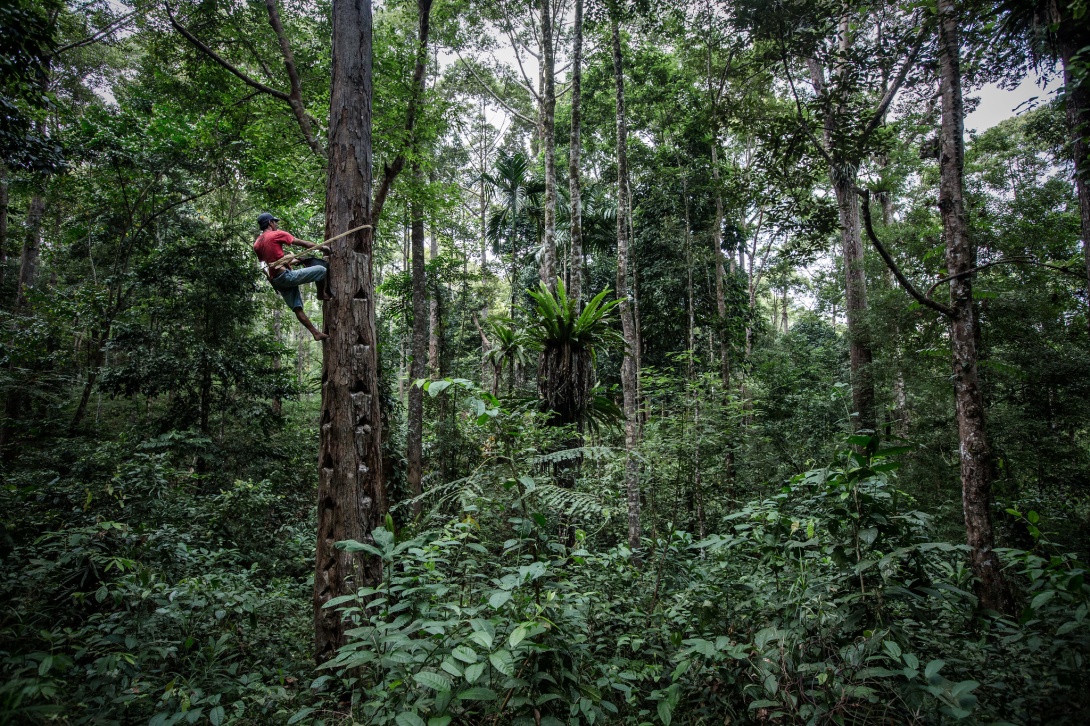The Nature Facility explored Indonesian plans to convert coal power station capacity to run partly on biomass, the impact of this on biomass feedstock sustainability, and regulatory changes needed to improve sustainability. The Facility’s briefing highlighted that the very large, continuous demand for biomass would put natural forests at risk. Adopting a blend of different types and sources of biomass with incentives to encourage mixed farming and agroforestry systems, however, could promote rural prosperity in some locations while also securing reliable levels of stock.

Commissioning Department: British Embassy Jakarta
Background
Indonesia is one of the world’s largest producers of greenhouse gas emissions, including a significant amount coming from coal-fired power-plants. The country has a commitment to reduce its emissions, with a target of 23% of its primary energy generation coming from renewable sources by 2030.
At the end of 2023, it is less than halfway to achieving this target.
UK and Indonesia collaboration has led to the Indonesia Just Energy Transition Partnership (JETP), launched in November 2022. As part of this, Indonesia agreed to cap its power sector emissions and placed a moratorium on new coal powerplants.
British Embassy Jakarta approached the Nature Facility with the question “If Indonesia were to convert ~50GW of coal fired power station capacity to ~30-40% biomass, what would be the impact on feedstock sustainability (deforestation, etc)? What kind of regulatory changes could improve sustainability?”.
What did the Nature Facility do?
To answer this question, the Nature Facility explored the different options available for incorporating biomass production and how it could be done in an environmentally friendly and equitable way, benefiting all Indonesians, not just larger industrial interests.
While the team found that there was great potential for biomass within Indonesia, which could indeed be used to help reduce emissions, the initiative would have to be approached in a particular way to benefit smallholders and low-income communities and protect existing forests from deforestation.
Without strict regulatory changes, laid out by the team, there would be no guarantee that biomass power generation would be sustainable, carbon neutral, and inclusive.
Indonesia has around 14 million hectares of degraded land, much of it because of large scale deforestation enabled by poor governance, where companies cut down forests without being required to replace them.
Although not all this land could be used for biomass feedstock, some of it could be repurposed to that effect. The team drew on research by CIFOR, which identified around 3.5 million hectares that could be used for growing the best biofuel species. However, available plots of land are small and spread out, making any commercial project viability tough to achieve because of transport costs and inefficiencies.
There could be greater justification on poverty reduction grounds, but any such project would need genuine support from the Indonesian government. Such support does not have much precedent: previous community plantation schemes have not always succeeded because of lack of support and a regulatory environment tending to prioritise larger, more commercial industrial plantations.
Even so, it is unlikely that community or industrial plantations could produce biomass in large enough volumes and soon enough to meet the proposed co-firing target for coal power plants, without it leading to increased deforestation and land degradation.
Forest landscape restoration
An alternative strategy proposed in the briefing, is forest landscape restoration (FLR) both inside and outside existing forest areas, notably through encouraging agroforestry – common traditional practices in Indonesia that can be particularly good sources of nature-friendly biomass. Doing this would add the environmental benefit of reversing land degradation, to the developmental benefits of multiple agroforestry products and services - including food as well as bioenergy.
Rather than replacing coal capacity, this approach could be better suited to replacing power generation in the outer Indonesian islands and remote areas, such as the Papua Highlands, where most power generation is done by diesel generators. (Apart from its climate and pollution burden, diesel is expensive and heavy, making it difficult to ship in.)
Regulatory changes would also be needed to promote a biomass mix that ensured equity and sustainability. A wider menu of biomass sources would enable a better fit to local conditions and could include:
- Recommended species (eg Kaliandra) for afforesting degraded land
- Land clearance (including standing trees for replanting) from approved large plantations
- Municipal solid waste
- Recommended tree species and traditional coppicing iwithin smallholder agroforestry schemes
- Oil palm trunks and rubber tree waste from managing extensive commercial estates
- Recommended species that contribute to peatland restoration
- Crop residues (eg, sugar cane, rice, corn) including from agroforstry cropping
- Agribusiness processing waste (eg palm oil).
The investigation’s conclusions will help FCDO to make the case that any move towards biomass for power generation must ensure a clear pathway to sustainable supply before any commitments are made towards co-firing targets.